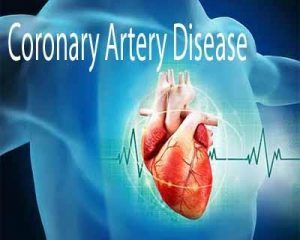- Home
- Editorial
- News
- Practice Guidelines
- Anesthesiology Guidelines
- Cancer Guidelines
- Cardiac Sciences Guidelines
- Critical Care Guidelines
- Dentistry Guidelines
- Dermatology Guidelines
- Diabetes and Endo Guidelines
- Diagnostics Guidelines
- ENT Guidelines
- Featured Practice Guidelines
- Gastroenterology Guidelines
- Geriatrics Guidelines
- Medicine Guidelines
- Nephrology Guidelines
- Neurosciences Guidelines
- Obs and Gynae Guidelines
- Ophthalmology Guidelines
- Orthopaedics Guidelines
- Paediatrics Guidelines
- Psychiatry Guidelines
- Pulmonology Guidelines
- Radiology Guidelines
- Surgery Guidelines
- Urology Guidelines
High dose Statins more effectively reduce cardiovascular events

High-dose as compared with low-dose pitavastatin therapy helped in significant reduction of cardiovascular events in Japanese patients with stable coronary artery disease (CAD), according to a randomized superiority trial published in the journal Circulation.
The study was conducted by Isao Taguchi, Department of Cardiology, Dokkyo Medical University Koshigaya Hospital, Koshigaya, Japan, and colleagues to determine whether higher-dose statin therapy would be beneficial and safe in Japanese patients.
For the purpose, REAL-CAD (Randomized Evaluation of Aggressive or Moderate Lipid-Lowering Therapy With Pitavastatin in Coronary Artery Disease) was conducted. It is currently the largest randomized trial to compare high-dose and low-dose statin therapy.
Elevated low-density lipoprotein cholesterol (LDL-C) is a major risk factor for cardiovascular events and lowering LDL-C with statins has proved effective for primary and secondary prevention of CAD. Several previous “more versus less statins” trials in patients with CAD demonstrated the significance of high-intensity statin therapy in the reduction of cardiovascular events compared with moderate-intensity statin therapy.
On the basis of these results, American Heart Association and European Society of Cardiology have issued different guidelines for statin therapy in CAD patients. However, high-intensity statin therapy is not widely implemented in daily clinical practice, particularly in Asia, at least partly because there have been no previous trials of more versus less statins in Asia. Therefore, this trial was conducted to establish a clear evidence for more versus less statins in an Asian population.
In this prospective, multicenter, randomized, open-label, blinded endpoint study, 13 054 Japanese patients with stable coronary artery disease who achieved low-density lipoprotein cholesterol (LDL-C) <120 mg/dL during a run-in period (pitavastatin 1 mg/d) were randomized in a 1-to-1 fashion to high-dose (pitavastatin 4 mg/d; n=6526) or low-dose (pitavastatin 1 mg/d; n=6528) statin therapy. The primary endpoint was a composite of cardiovascular death, nonfatal myocardial infarction, nonfatal ischemic stroke, or unstable angina requiring emergency hospitalization. The secondary composite endpoint was a composite of the primary endpoint and clinically indicated coronary revascularization excluding target-lesion revascularization at sites of prior percutaneous coronary intervention.
The mean age of the study population was 68 years, and 83% were males. The mean LDL-C level before enrollment was 93 mg/dL with 91% of patients taking statins.
Based on the REAL-CAD trial, investigators found that:
- The baseline LDL-C level after the run-in period on pitavastatin 1 mg/d was 87.7 and 88.1 mg/dL in the high-dose and low-dose groups, respectively.
- During the entire course of follow-up, LDL-C in the high-dose group was lower by 14.7 mg/dL than in the low-dose group.
- With a median follow-up of 3.9 years, high-dose as compared with low-dose pitavastatin significantly reduced the risk of the primary endpoint (266 patients [4.3%] and 334 patients [5.4%]; hazard ratio, 0.81; 95% confidence interval, 0.69–0.95 and the risk of the secondary composite endpoint (489 patients [7.9%] and 600 patients [9.7%]; hazard ratio, 0.83; 95% confidence interval, 0.73–0.93.
- High-dose pitavastatin also significantly reduced the risks of several other secondary endpoints such as all-cause death, myocardial infarction, and clinically indicated coronary revascularization.
- The results for the primary and the secondary composite endpoints were consistent across several prespecified subgroups, including the low (<95 mg/dL) baseline LDL-C subgroup.
- Serious adverse event rates were low in both groups.
"High-dose (4 mg/d) compared with low-dose (1 mg/d) pitavastatin therapy significantly reduced cardiovascular events in Japanese patients with stable coronary artery disease," concluded the authors.
For further information click on the link: https://doi.org/10.1161/CIRCULATIONAHA.117.032615

Disclaimer: This site is primarily intended for healthcare professionals. Any content/information on this website does not replace the advice of medical and/or health professionals and should not be construed as medical/diagnostic advice/endorsement or prescription. Use of this site is subject to our terms of use, privacy policy, advertisement policy. © 2020 Minerva Medical Treatment Pvt Ltd